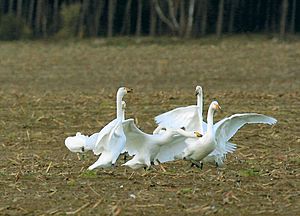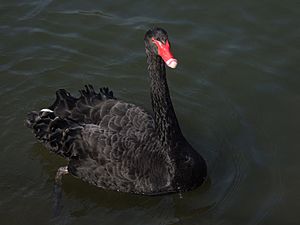Type species facts for kids
The term type species is an important idea in how scientists name and group living things. It's part of a special system that helps everyone agree on the correct names for plants, animals, and other organisms.
This system, called the "type system," is super important for giving scientific names to all living things. It works a bit differently depending on the type of organism. But generally, it means that each scientific name is connected to a specific example, often a real physical example called a type specimen. This helps scientists figure out exactly which name belongs to a certain living thing or a group of living things (called a taxon). There are international rules, like special guidebooks, that explain exactly how these "types" are chosen and used.
Contents
What is a Type Species?
A type species is like the main example for a group of similar living things, called a genus. Think of a genus as a family of closely related species. The type species helps to clearly define what that genus is all about. It's a key part of making sure scientific names are clear and don't get mixed up.
Type Species for Animals
For animals, the type species of a genus (or a smaller group called a subgenus) acts as the main example for that whole group. This specific species usually has a type specimen (or sometimes a few specimens) that represents it. So, the type species connects the genus (like "Swans") to a real, physical example (like a specific swan specimen). This makes sure that when scientists talk about a genus, they are all thinking about the same group of animals.
For example, the Whooper swan (Cygnus cygnus) is the type species for the genus Cygnus, which includes all swans. This means that if you want to understand what the genus Cygnus is, you would look at the Whooper swan as the main example.

Type Species for Plants, Algae, and Fungi
For plants, algae, and fungi, the idea of a type species is a bit different. Here, the type species of a genus is simply the species that shares the same type (either a specimen or a drawing) as the genus itself.
For example, the European Wild Apple (Malus sylvestris) is the type species of the genus Malus. This means that the original specimen or drawing used to define the genus Malus is also the one used for Malus sylvestris. For these groups, "type species" isn't an official term in the rules, but it's a useful way for scientists to talk about which species is the main example for a genus.
See also
In Spanish: Especie tipo para niños


